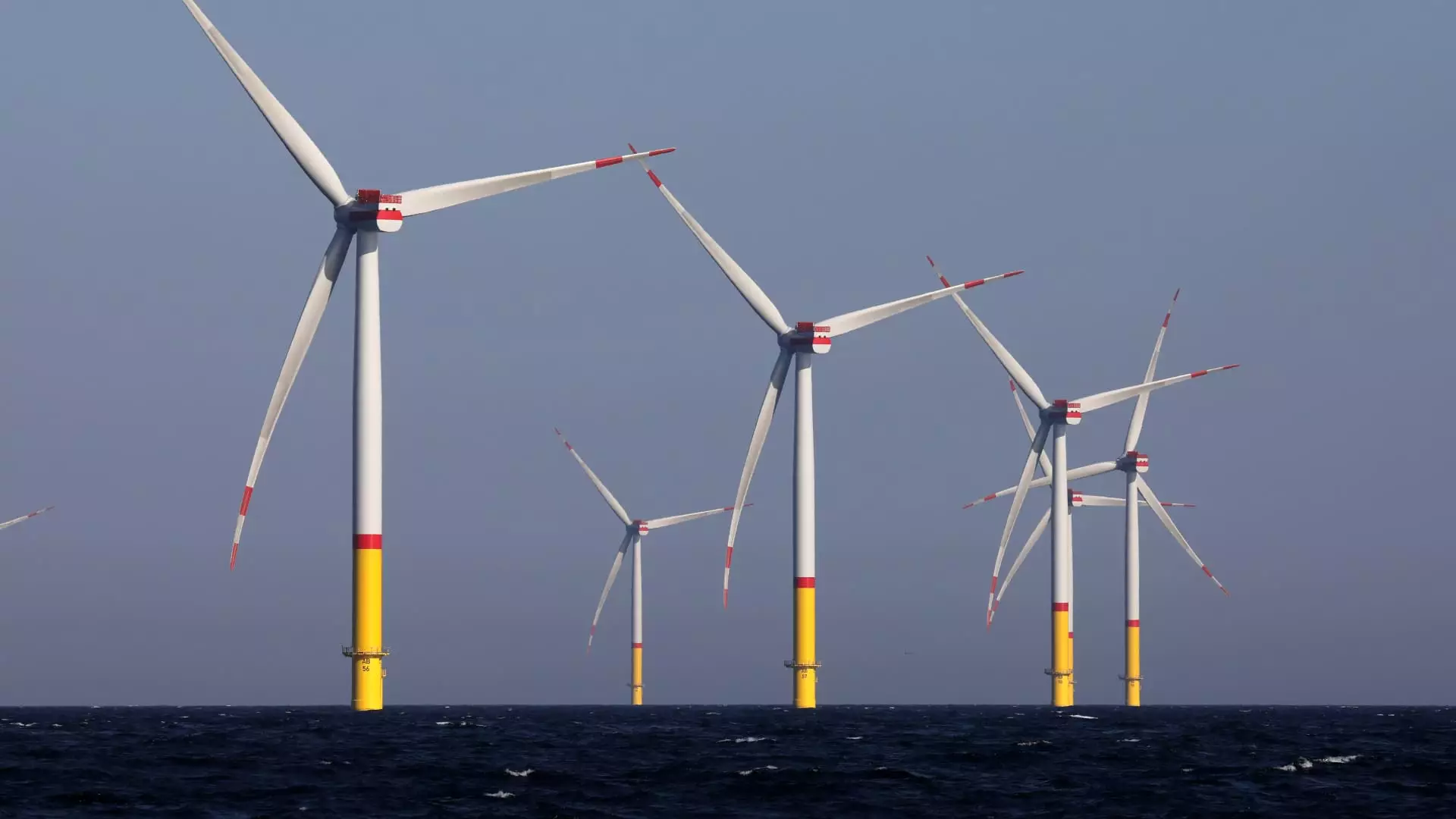In an era marked by contentious energy policies and stark divides between environmental sustainability and economic stability, the recent revival of the Empire Wind 1 project by Equinor sheds light on the pressing need for a balanced approach to energy generation. With the resumption of construction, this offshore wind farm is set to become a significant player in New York’s energy landscape. The implications of its progress are far-reaching—not just for the state but for the entire evolving narrative around clean energy in the United States.
The Political Maneuvering Behind Energy Projects
The restarting of the Empire Wind 1 project comes on the heels of political shifts that encapsulate the tug-of-war between different administrations and their respective energy policies. Under the surveillance of the Trump administration, a stop-work order was hastily imposed, echoing a larger pattern where energy projects become pawns in political gamesmanship. This order raised alarming red flags for investors and stakeholders, indicating a hostile environment for renewable energy efforts, especially those that required significant investment and governmental approval.
New York Governor Kathy Hochul’s swift negotiations with Equinor and federal officials underline the necessity for robust dialogue amidst fluctuating political landscapes. By working together, they aim to mitigate not only the fallout from the halt but also the broader uncertainties that threaten the future of renewable energy projects. The reinstatement of the Empire Wind project represents more than just the resumption of construction—it reflects a commitment to collaborate beyond partisan lines for the welfare of the citizens and the environment.
Job Creation and Economic Stability
The economic implications of the Empire Wind project resonate deeply within a state that, like many others, grapples with job creation in the wake of the COVID-19 pandemic. Hochul revealed that this offshore wind initiative would generate approximately 1,500 union jobs—a significant boon to the local economy. In an era where economic recovery is paramount, investment in renewable energy exemplifies a forward-thinking strategy to create opportunity while also tackling environmental issues.
The $2.5 billion already funneled into Empire Wind 1 by Equinor showcases the incredible investment potential in clean energy projects. Not only does this initiative offer jobs, but it actively contributes to New York’s goal of achieving a 70% renewable energy supply by 2030. As unemployment figures remain a concern, the reliable creation of high-quality jobs in sustainable industries will bolster economic confidence in the region.
The Renewable Energy Imperative
The resumption of construction aligns with a broader narrative that emphasizes the urgency of transitioning to renewable energy sources. Equinor’s ambitious plan to develop 54 towering turbines generating 810 megawatts of electricity—a figure enough to power half a million homes—exemplifies the significant strides being made in renewable capabilities. However, this triumph is often overshadowed by the contentious debate surrounding the future of energy in the U.S.
It’s crucial to recognize that renewable projects like Empire Wind 1 contribute capital to the economy and yield long-term dividends through decreased utility costs and reduced greenhouse gas emissions. Critics might argue that the costs of such projects outweigh the benefits, but with the escalating threats posed by climate change, the need for clean, sustainable energy is becoming undeniable.
Environmental Regulations and Opposition
Historically, New York has maintained a cautious stance on new natural gas pipelines, reflecting a broader skepticism towards fossil fuel expansion. The complex relationship between fossil fuels and renewables can lead to an intense pushback against initiatives perceived as detrimental to environmental interests. However, striking a balance between regulation and reasonable development is a key tenet of center-right liberalism, which allows for pragmatic approaches to energy diversification.
Though the dialogue surrounding natural gas remains simmering, Hochul’s statement underscores the state’s commitment to collaborating with the Biden administration and private entities for innovative energy solutions. While some may critique the administration for inconsistency, the focus on developing reliable energy resources that fit within legal frameworks is essential as states navigate the transition towards sustainable energy futures.
The Path Forward: A Potential Energy Model for the Nation
As Empire Wind 1 pushes towards its goal of commencing commercial operations by 2027, its significance extends well beyond New York. The project stands as a potential model for similar initiatives across the nation. The complexities of its journey reflect not only the obstacles faced by wind energy but also the opportunities inherent in forging cooperative relationships across all levels of governance.
The implications of this project are profound: it signals a broader acceptance of wind energy and showcases how it can coexist with traditional energy sectors through careful policy design. A community driven by innovation and adaptability can emerge from this evolving narrative, paving the way for a future where energy generation transcends political divides and unites citizens under a common cause for sustainable living.

